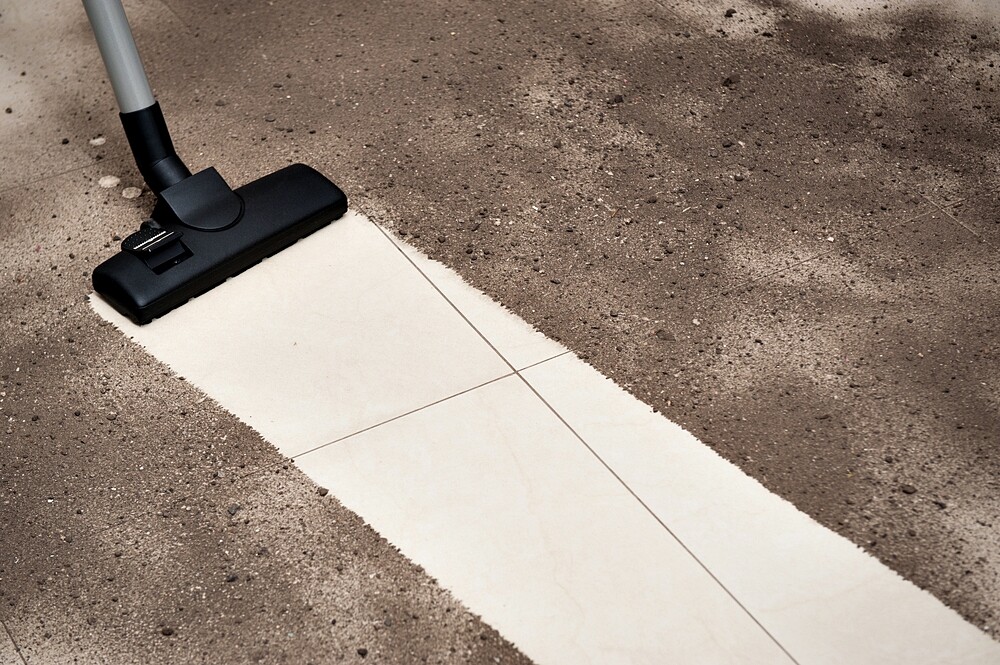Here we show you how to clean tiles in the bathroom and kitchen properly, decalcify tiles and avoid mould.
Cleaning floor tiles
- Sweep up loose dirt with a broom.
- Pour warm water into a bucket and add detergent, all purpose cleaner or floor cleaner.
- Treat stubborn stains with the cleaning water and a brush and leave for a few minutes.
- Then wipe the entire floor with the cleaning water and a mop.
- Dry floor tiles with a microfibre cloth.
Cleaning bathroom tiles
- Cleaning agents: All-purpose cleaners and glass cleaners dissolve simple dirt from the tiles. After cleaning, it is important to dry with a microfibre cloth.
- Vinegar: Lime stains can appear on all areas that come into contact with water. Particularly in the bathroom, water splashes repeatedly come into contact with the wall tiles. This is what you need to decalcify: Dilute vinegar essence with water and apply to the calcified bathroom tiles with a cloth. As the joints are very sensitive to acid, the mixture should not be allowed to act for too long. Then rinse the whole thing with warm water.
- Ammonia solution: If the tiles have lost their luster, ammonia can make them shine again.
Important: Both ceramic tiles, stoneware tiles and porcelain stoneware tiles are acid-resistant and can be cleaned with these agents. While natural stone tiles are acid-sensitive and vinegar, for example, would damage the surface. Better: Use soft soap for cleaning natural stone tiles.
Cleaning kitchen tiles
- Dishwashing detergent: To remove grease stains from the wall tiles in the kitchen, use dishwashing detergent and warm water. Stubborn stains should be soaked and treated with a brush.
- Curd soap: Encrustations can also be softened with curd soap and water and scraped off with a plastic spatula.
- Heavy duty detergent: The same works with liquid heavy duty detergent. Then wipe the tiles with clear water and dry them.
Cleaning joints
Dirty and calcified joints can be easily cleaned with baking powder. The powder should be applied to a damp sponge and wiped over the affected areas. By the way, baking powder not only helps against lime residue, but is also a helpful household remedy against unpleasant odours and a blocked drain.
Preventing mould in the bathroom
- Mould develops very quickly due to heat, moisture and nutrients such as soap residues or hair. Therefore, sufficient and regular ventilation is necessary.
- A constant room temperature of 24 to 25 degrees Celsius is optimal. If the difference in temperature between warm water and cold walls is too great, water vapour is produced which settles on the joints and tiles. Therefore: Always rinse the tiles and joints once after showering and rub them dry with a towel.
- Furthermore, shower walls should remain open after showering. This way, mould has no chance at all.

